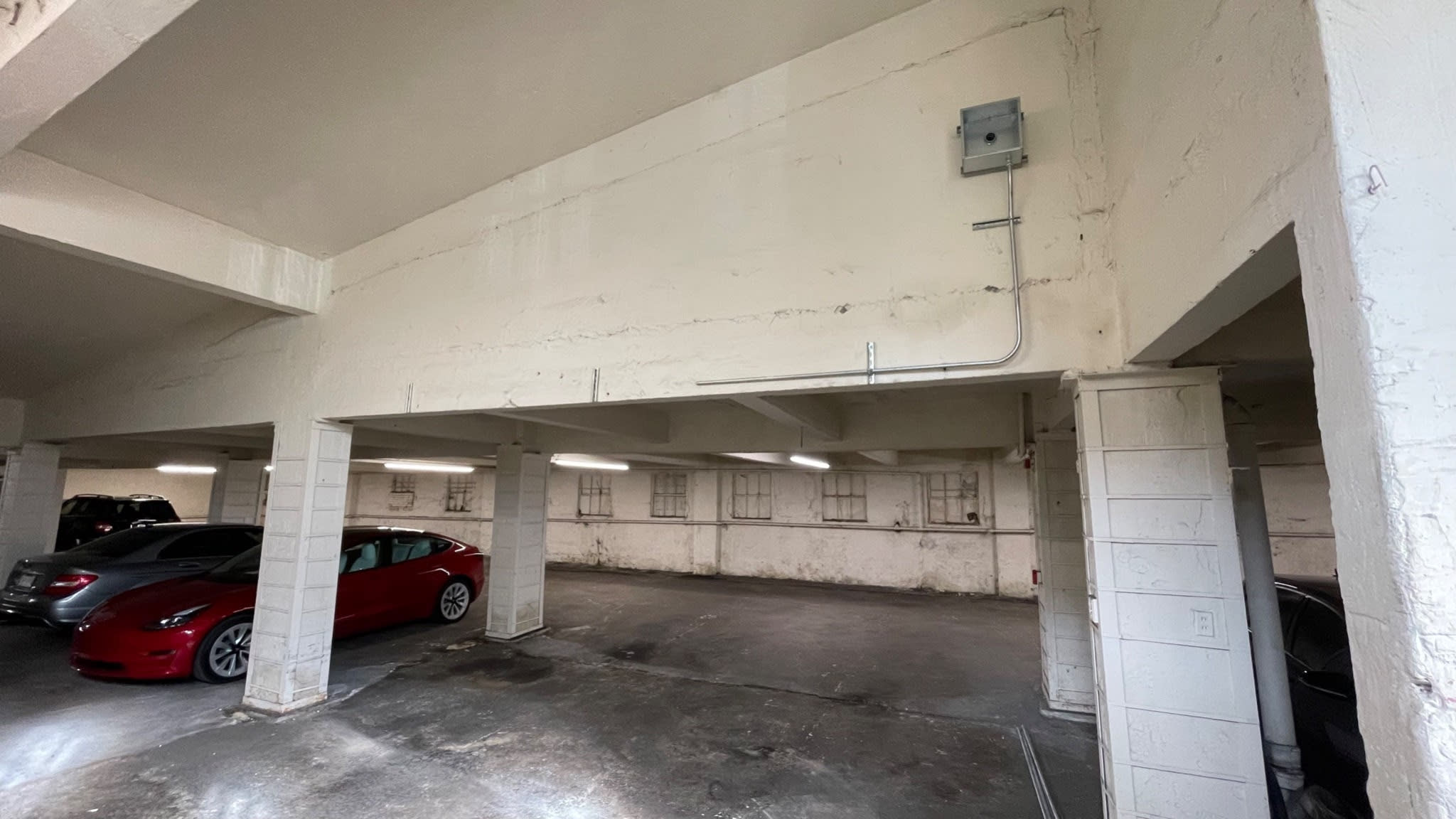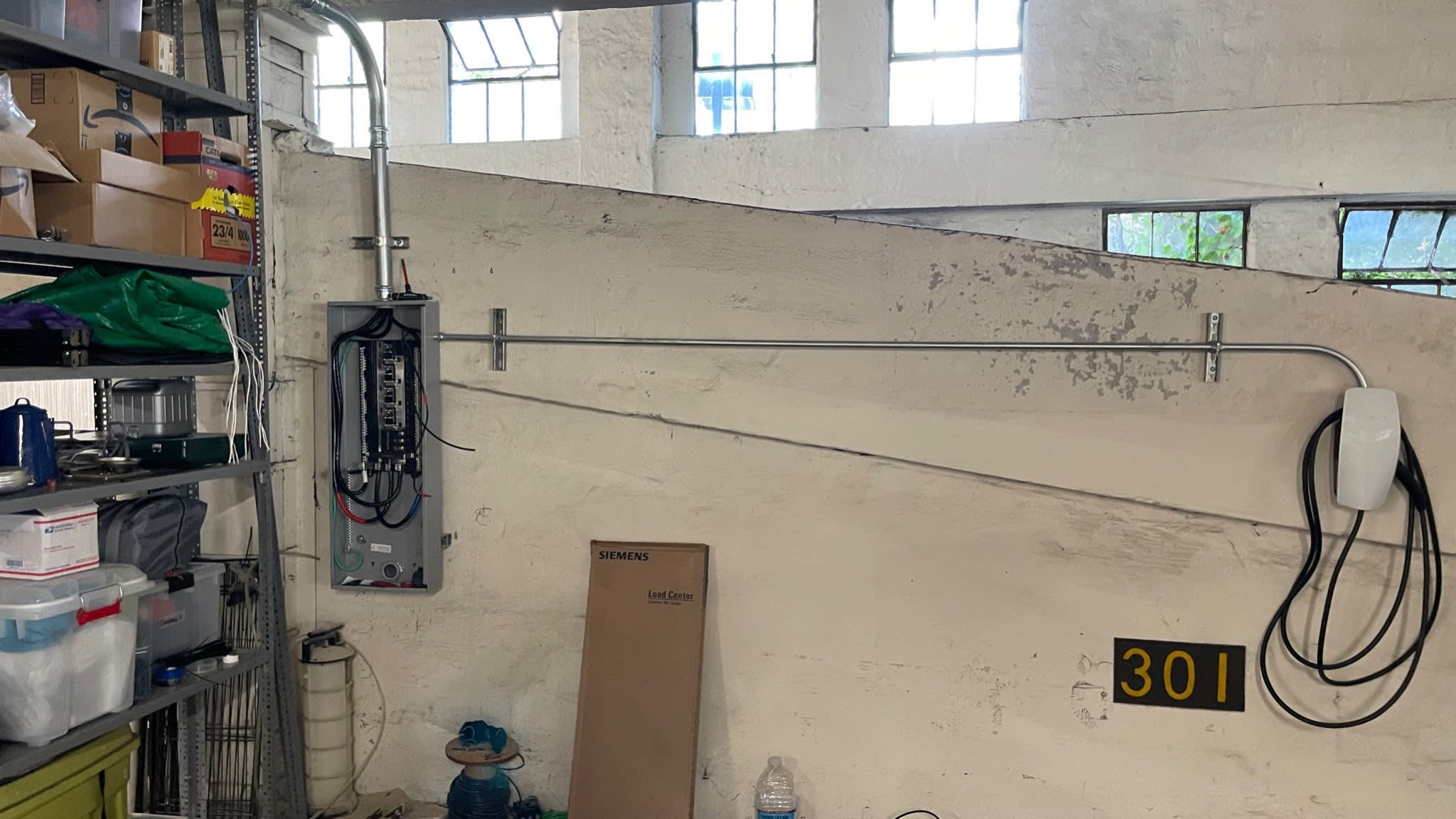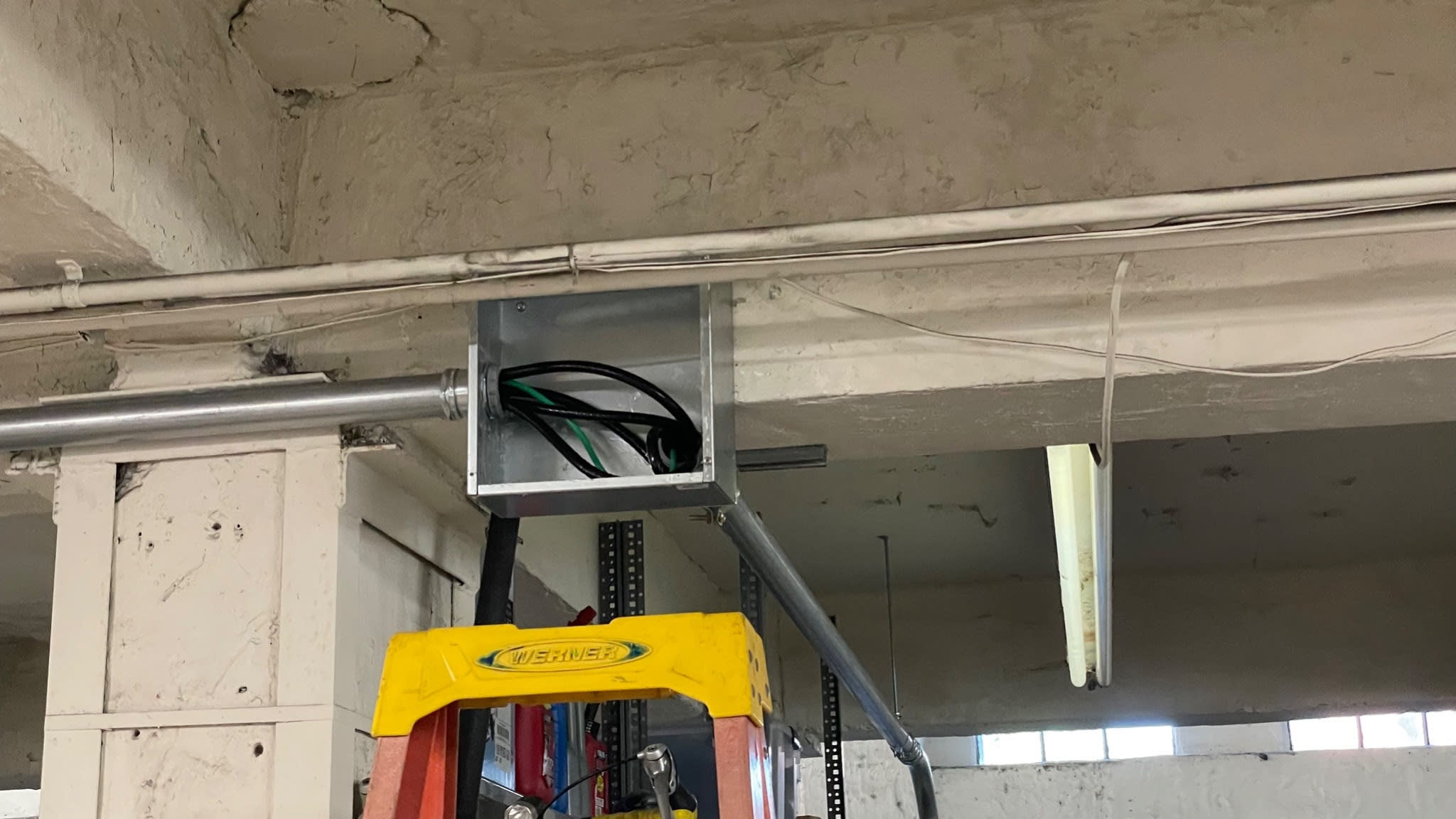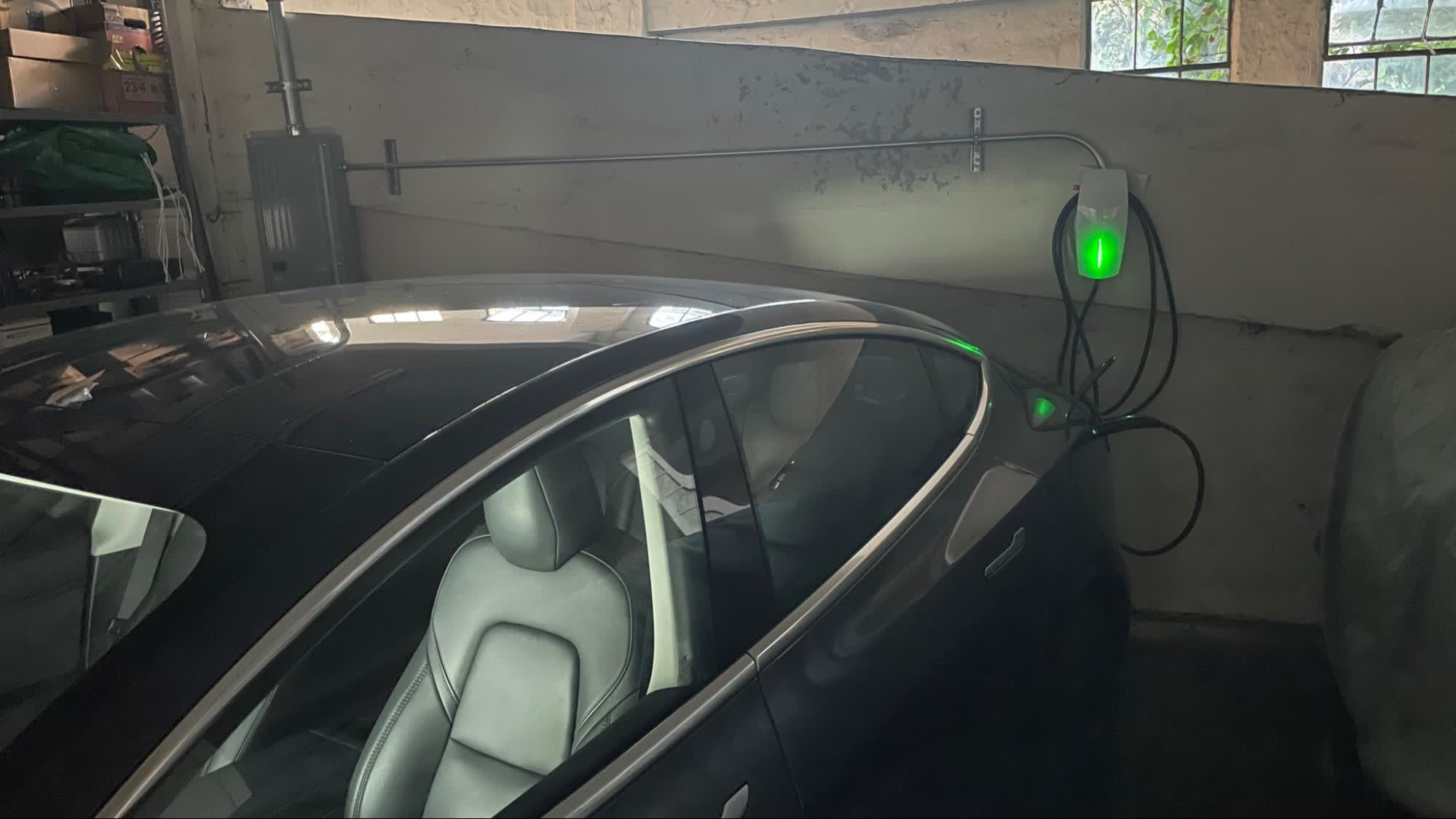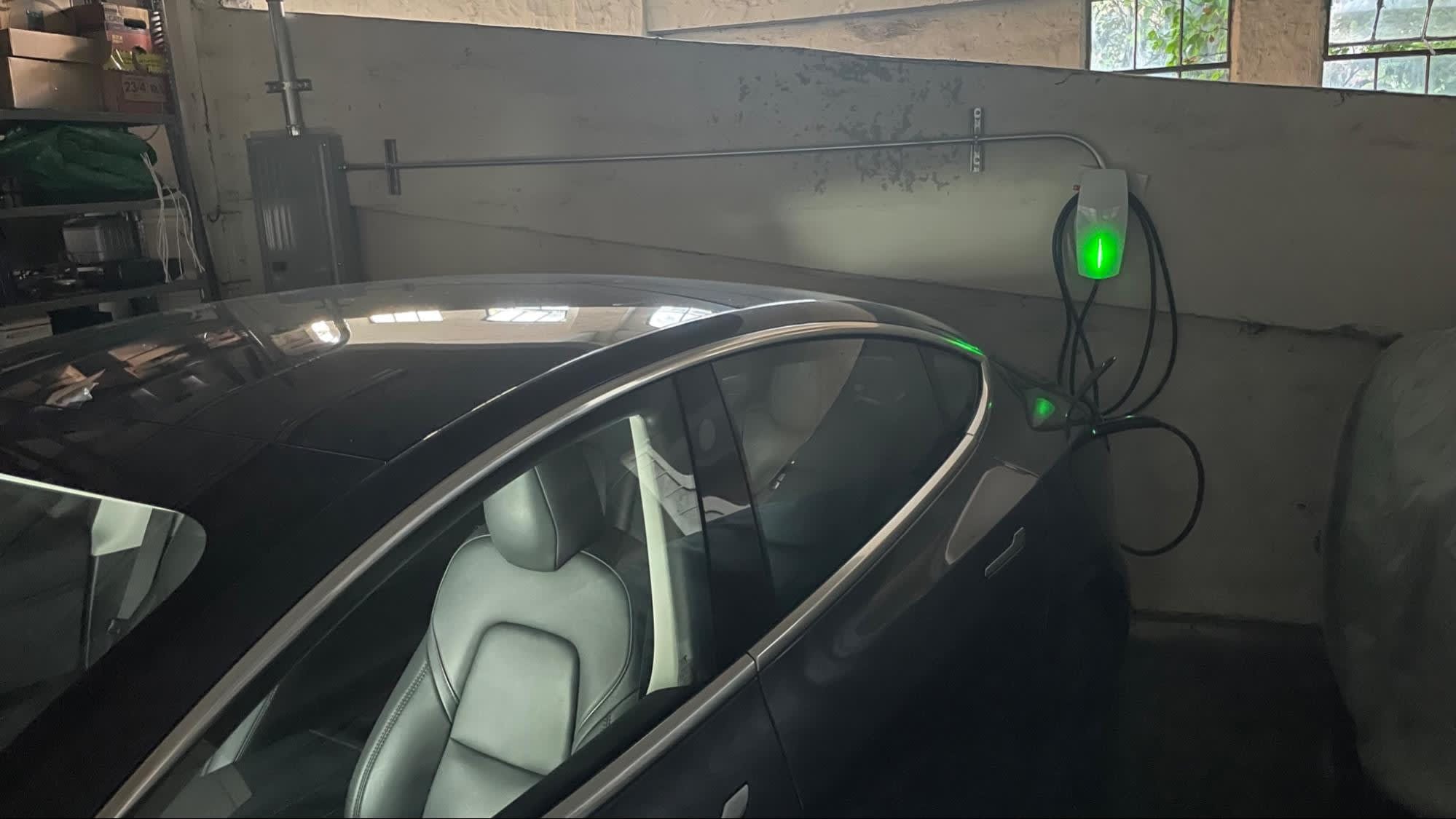
Community Charging installation
Delivering safe, inexpensive charging to all makes of EVs in a garage managed by the HOA
Charging installation
When you live in a multi-family residential building (condominium, apartment complex, etc), adding the ability to charge your car at home has its own unique challenges. Some of those challenges come in the form of being a renter vs. an owner, obtaining Homeowners Association or Condominium Association approval, differences in code requirements, legacy infrastructure, energy metering, and addressing the ability to expand the capability for future installations. And that’s just the list I could think of offhand.
I am a renter in a 38-unit condominium apartment complex in downtown Knoxville, TN and I own a Tesla Model 3. Each unit in my complex has one or more deeded parking spaces in an attached garage. As these spaces are deeded, and as the garage is multi-story (3 floors plus a basement), installing the charging equipment near the electrical infrastructure isn’t easy for the majority of units. Additionally, as there is a limited capacity of the incoming infrastructure (service transformer limits, etc), allowing individual owners to just put in charging equipment without consideration of load sharing will substantially limit the number of owners that could install charging equipment. I was asked by the condominium association president to provide a primer presentation on these issues about a year before I even bought my Tesla as he saw a need for the Board to at least understand some of the nuances before they were requested to approve an install the first time.
For the first year and a half of owning my Model 3, I made use of public charging almost exclusively, as I’m considerably lucky in that the City of Knoxville has 4 free J1772 units in the city garage across the street from me. However, with another resident in my building purchasing a Tesla, the economics of installing charging in our building’s garage shifted. I took what I started with the original presentation and developed it into an actual proposal for the other owner and me to request approval to install charging at our spaces. While the Board had an understanding from my previous presentation of what they might need to consider, they did not take action on developing a policy. This meant that our proposal had to also outline various policy decisions and requirements that the Board ultimately requested be specified in a Memorandum of Understanding that had to be signed by the board, the other resident, myself, and the owner of my unit (since I’m a renter) as a condition to proceed.
One of the primary considerations with respect to obtaining board approval was how the energy usage would be paid for. As is the case in many multi-family residential buildings, the units are individually metered but the meters are not accessible from the garage (in our case the garage is a completely separate building with a breezeway connector). The garage electrical infrastructure has a single meter paid by the Condominium Association as a common element, and it provides power to lighting, garage doors, and other common loads. As part of our proposal, we specified a non-resettable kWh meter (not a utility meter) to be installed upstream of our installation so that monthly the meter could be read and we could be billed for our usage. A future promised feature of the Tesla High Powered Wall Connector is direct billing; and we may make use of that in the future to simplify the process.
The final proposal included the following equipment and requirements:
- Installation of a new 100A service panel for EV charging only, with at least 10 double-pole breaker positions to allow for up to 10 Tesla HPWC’s in the future.
- Non-resettable meter between disconnect and new 100A panel.
- Tesla HPWC Generation 3 units configured to 40A each until load sharing is enabled by software update.
- Any future installations tying into that panel must be Tesla HPWC Gen 3 units.
- Ownership of the infrastructure from the main service tie-in to the end point connection of the Tesla HPWC would be turned over to the Condominium Association after passing city codes inspection.
- All costs for installation and energy usage would be borne by the owners directly (e.g.: zero cost to Condominium Association).
- Any future tie-ins to the panel would be subject to a nominal fee paid to offset the costs of the initial panel installation.
Some discussion related to providing the ability to split the circuit up to 10 (minimum in proposal) to 16 (Tesla HPWC future maximum) ways in the future is warranted. If in the future the group is expanded to full capacity and everyone is charging simultaneously it may appear that the charge rate will be unacceptably low (as low as 5A at 208V, or 1kW). However, this is acceptable because not all stations would be expected to be used simultaneously. With the load sharing capability it would be possible to step up to 48 amps as vehicles finish charging or aren’t present, rather than only permitting Level 1 (120V) charging. By requiring sharing, this preserves overall capacity of the building (transformer/switchgear) and ensures that all residents in the future have the option to purchase an EV and charge at home.
Another point of discussion is on Electric Vehicle Supply Equipment (EVSE) selection. As both of us that are installing this equipment are Tesla owners, it made sense to standardize around the Tesla HPWC, as it is cheaper and through software updates will provide the versatility that we need. Other options we considered are the JuiceBox Pro, Siemens VersiCharge, and ClipperCreek. Only the JuiceBox Pro would have provided the needed sharing capabilities, but the units are nearly 3 times the cost of the Tesla HPWC at $1350-1400 each (32A / 40A variants) vs. $500 for the Tesla HPWC.
While we selected the Tesla HPWC for our install, a future EV owner with ANY brand EV can install and use a Tesla HPWC with a third-party Tesla-J1772 adapter ($100-200) or purchasing a modified Tesla HPWC that has a J1772 cord installed.
After obtaining approval and settling on agreeable terms in our Memorandum of Understanding, we moved on toward contractor selection. Another complexity of this type of installation versus a typical home installation is that the installation falls under commercial requirements vs. residential which are less stringent. All of these factors drive up the cost and complexity compared to a typical residential install (full subpanel, they will have to core drill the concrete to run one of the conduits). It also goes without saying that while some people may avoid pulling a permit for a home install (NOT recommended!) - all permits, inspections, and other criteria for this install are necessary and likely to be checked via codes and insurance inspectors.
We attempted to obtain quotes from four contractors. Three contractors provided quotes after a site visit; however one had to be thrown out due to licensure issues impacting their ability to pull the required permits. Again, make sure that prior to starting work the permits are pulled - and that you have permitting as a line item in the contract you sign.
The quotes ranged widely, and were as follows:
- Contractor A (disqualified): $3,425
- Contractor B: Did not respond
- Contractor C: $5,045
- Contractor D: $5,608
My own estimate based on materials and some assumptions on labor came out to $3,484 (I am a Civil Engineer that has performed planning and estimating in my career), but that was also before supply chain issues of 2021 caused the pricing to go through the roof. Only Contractor D chose to install a new 100-amp disconnect rather than re-use an existing spare one. Ultimately after some discussions, we selected Contractor D and they agreed to match Contractor C’s price even with the additional disconnect switch. A big part of that selection was on communication and comfort with the contractor’s approach. It was very clear that both Contractors C and D would have performed an adequate installation, and would be professional about it.
Conclusions:
- Laying the groundwork when HOAs or Condominium Associations are involved is vital to being able to succeed in obtaining approvals. HOAs can be difficult at times, but things can move quickly if they’re adequately prepared.
- Thinking through the “what-ifs” and having ready answers can expedite the process. However, even when you think you have all of your bases covered someone may come up with another issue.
- Determine who is going to pay for what, and who will own what equipment when installing equipment into common use areas and make that clear. Contracts don't have to be scary. They simply explain to all involved parties the promises made by the others.
- When it comes to permitting - don’t assume. If they haven’t specified it on the quote if it includes permitting, ask if it does. If they attempt to hedge or brush it off as unnecessary - consider another contractor. Permitting is typically about $75 and ensures you’re protected by the city/county performing an inspection after the work is performed to ensure it is code-compliant. Additionally, if this is a residential installation, permitted work is important when you are completing your property disclosure.
- Seek multiple quotes from reputable contractors to compare. If there’s a substantial difference between two or more of them, make sure you have enough information to compare what is included. Additionally, make sure the quotes have enough detail so that when you sign it you know what scope of work they’re going to be performing.
- When your selected contractor starts work, ask for the permit information and consider verifying it with your permitting office. You also should expect to see a visit prior to and after the installation by the Codes Enforcement department in your City/County.
After some delays with permitting, the contractor was issued the required permit but for a 200A, 3-phase installation instead of the originally contracted 100A single phase. They agreed to go ahead with the installation at the original price even though this change would significantly increase their costs. In the end, however, we received a much better installation for the same price, which will allow for future expansion beyond what we originally were planning for. The HOA, my neighbor, and myself are all very happy with the quality of work performed and the building is well-suited for converting up to 25% of the parking spaces in the garage to have charging stations in the future off of this one panel.
